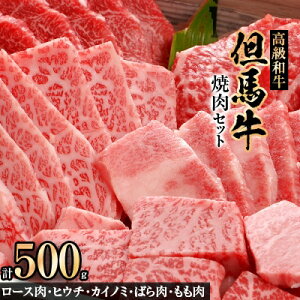何でもかなえてくれそうなお寺
新西国霊場13番は神秀山 満願寺(高野山真言宗)です。名前からして、何でも願いを叶えてくれそうなありがたいお寺です。阪急電鉄宝塚線の雲雀丘花屋敷駅からバスに乗り人里離れたあたりまで来ますと、満願寺へ続く入口が見えてきました。

中国風に見える山門
石段を登って山門まで来ると、なにやら違う雰囲気。すこし、中国的な感じを受けたのは、仁王像のそれぞれに屋根が乗り、入り口の上部空間が半円になっているからでしょうか。木製の立派な仁王像に、まずは訪問の御挨拶をしました。鎌倉時代末期の作品だそうです。



金堂までの長い一本道
山門をくぐると長~い、一本道が目の前に現れます。最初は下り、そこから登りになって突き当りに見えている金堂に行く道です。長い道を歩くことで、神聖なところに近づいていく感じを演出してくれます。また、石段でなく石畳になっているのも、道が実際よりも、より長く見えるように思います。自然の地形を活かした仕掛けでしょうか。


お寺の方に御挨拶して金堂のカギを開けていただき、中に入りました。ご本尊は秘仏の千手観音様ですが、年一回の御開帳の日ではなかったので、お顔は拝めませんでした。周囲の仏像にもお祈りをして、となりの毘沙門堂に移りました。


金太郎さんの墓にもお参り
毘沙門堂にて毘沙門天像を拝んだ後、金太郎さんのモデルとなった坂田金時の墓もお参りして帰ることにしました。金堂から見た帰りの一本道も長く感じます。神聖な世界で身も心も落ち着かせて、現世に戻っていく感じがします。(完)

満願寺の御朱印

兵庫県のお土産

【ふるさと納税】但馬牛焼肉セット【500g】【1098409】
価格:25,000円
(2021/12/22 21:31時点)
感想(0件)
Manganji Temple (Hyogo prefecture)
A temple that seems to make anything come true.
The 13th temple in the New Sacred Sites of the Western Japan is Shinshuzan Manganji Temple (Koyasan Shingon sect). From the name, it is a temple that seems to be grateful to grant wishes for anything. When you take a bus from Hibarigaoka Hanayashiki Station on the Hankyu Railway Takarazuka Line and come to a secluded area, you will see the entrance leading to Manganji Temple.
The gate of the temple looks Chinese style
When I climbed the stone steps to the temple gate, there was something different about it. The reason why it looked a little Chinese was probably because each of the Nio statues had a roof over it and the upper space at the entrance was a semicircle. I first greeted the magnificent wooden Nio statues. It is said to be works from the late Kamakura period (1185-1333).
Long straight approach to Kondo Hall
After passing through the gate, a long, straight road appears in front of you. At first, the path descends, and then climbs up to the Kondo (main hall) at the end of the path. Walking along the long path gives the impression of approaching a sacred place. The fact that the path is stone paved instead of stone steps also makes it appear longer than it actually is. Perhaps this is a trick to take advantage of the natural terrain.
I greeted the temple staff and asked him to unlock the Kondo (main hall) and entered. The principal image of the temple is the hidden statue of Senju Kannon (Thousand-armed Avalokitesvara), but since it was not the day of the annual Gokaicho, I was not able to see his face. I prayed to the surrounding Buddhist statues and moved on to the Bishamondo hall next door.
Visit Kintaro’s grave
After worshipping the statue of Bishamonten at Bishamondō Hall, I decided to visit the tomb of Kintarō Sakata Kintoki, the model for Kintarō-san (Japanese folklore), and return home. The single road back from Kondo also feels long. I feel like I am returning to this world after calming my body and mind in the sacred world. (End)
Temple Manganji (préfecture de Hyogo)
Un temple qui semble faire en sorte que tout devienne réalité.
Le treizième temple des nouveaux sites sacrés de l’ouest du Japon est le temple Shinshuzan Manganji (secte Shingon de Koyasan). D’après son nom, il s’agit d’un temple qui semble pouvoir exaucer tous les vœux. Lorsque vous prenez un bus à la station Hibarigaoka Hanayashiki sur la ligne Hankyu Railway Takarazuka et que vous arrivez dans une zone isolée, vous verrez l’entrée menant au temple Manganji.
La porte du temple est de style chinois
Lorsque j’ai gravi les marches de pierre menant à la porte du temple, il y avait quelque chose de différent. La raison pour laquelle elle avait l’air un peu chinoise était probablement due au fait que chacune des statues de Nio avait un toit au-dessus d’elle et que l’espace supérieur de l’entrée était en demi-cercle. J’ai d’abord salué les magnifiques statues de Nio en bois. On dit qu’il s’agit d’œuvres de la fin de la période Kamakura (1185-1333).
Longue approche rectiligne de la salle Kondo
Après avoir franchi la porte, une longue route droite apparaît devant vous. Au début, le chemin descend, puis monte jusqu’au Kondo (salle principale) au bout du chemin. Marcher sur ce long chemin donne l’impression de s’approcher d’un lieu sacré. Le fait que le chemin soit pavé de pierres au lieu de marches en pierre le fait également paraître plus long qu’il ne l’est en réalité. Il s’agit peut-être d’une astuce pour tirer parti du terrain naturel.
J’ai salué le personnel du temple, lui ai demandé de déverrouiller le Kondo (hall principal) et suis entré. L’image principale du temple est la statue cachée de Senju Kannon (Avalokitesvara à mille bras), mais comme ce n’était pas le jour du Gokaicho annuel, je n’ai pas pu voir son visage. J’ai prié les statues bouddhistes environnantes et je me suis rendu dans la salle Bishamondo située juste à côté.
Visitez la tombe de Kintaro
Après avoir vénéré la statue de Bishamonten au Bishamondō Hall, je décide de visiter la tombe de Kintarō Sakata Kintoki, le modèle de Kintarō-san (folklore japonais), et de rentrer chez moi. L’unique route de retour de Kondo semble également longue. J’ai l’impression de revenir dans ce monde après avoir calmé mon corps et mon esprit dans le monde sacré. (Fin)
